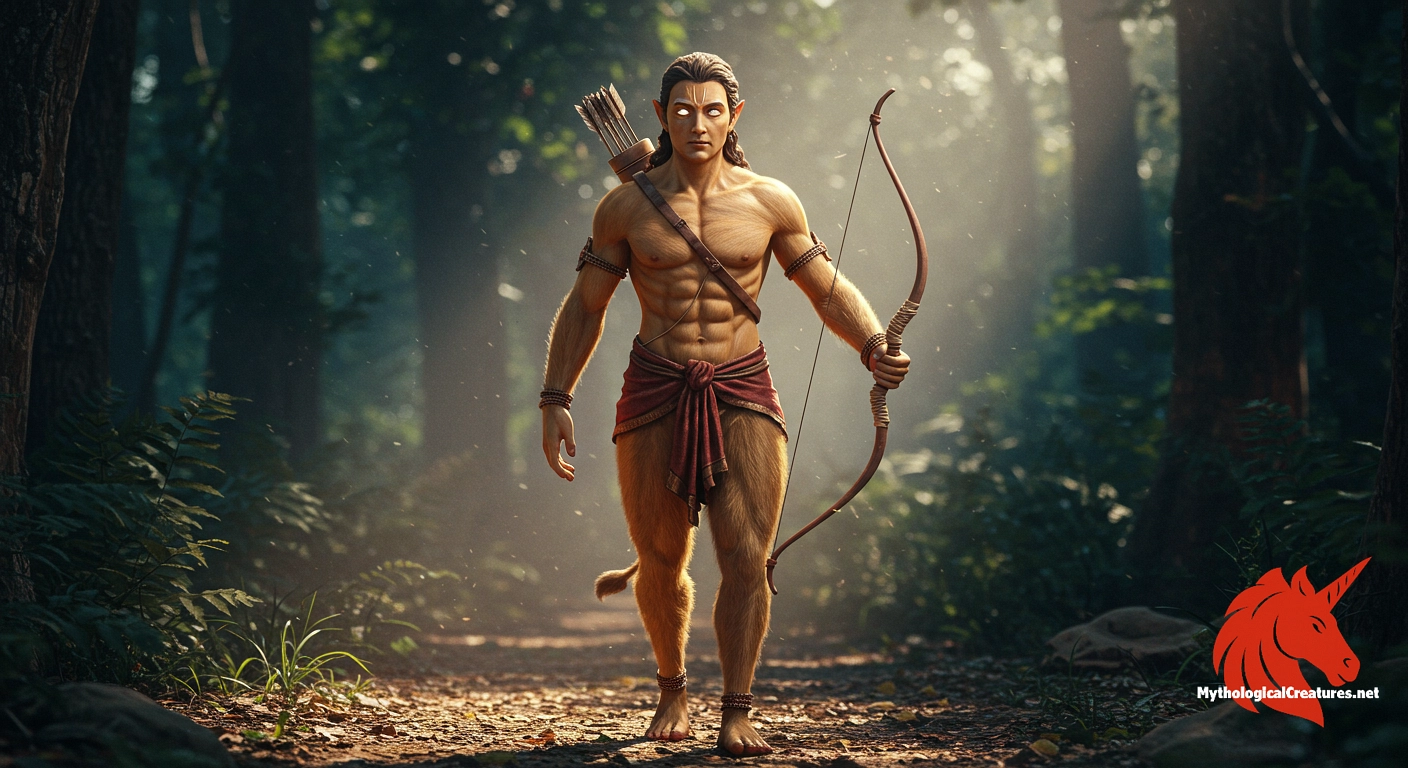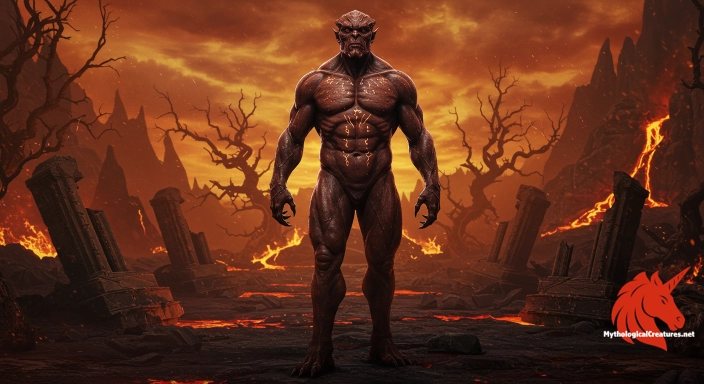Revanta: Revanta is a minor Hindu deity renowned as the brilliant huntsman and chief of the Guhyakas.

Revanta
Revanta - Revanta represents the fusion of martial prowess and supernatural leadership, reflecting divine intervention in natural and wild realms.
Origins & First Encounters
Revanta, also known as Raivata, emerges as a fascinating figure in Hindu mythology as the radiant and youthful son of the solar deity Surya and his consort Saranyu. His early attestation in the Rig-Veda establishes him as a minor yet significant divine personality whose brilliance transcends mere mortal bounds. Often revered as the chief of the Guhyakas, Revanta embodies the mystique of forest-dwelling spirits that are intimately linked with the Himalayas. His iconographic presence as a celestial huntsman underscores a cultural narrative that fuses martial prowess with a deep connection to the natural world. The myth of Revanta is interwoven with both Vedic traditions and later regional developments, forming a complex tapestry of lore that spans ages. His role not only accentuates the martial aspects of divinity but also symbolises the nurturing protection of nature. Amidst evolving religious practices, his tale has been embraced by communities as a reminder of resilience and brightness. The enduring legacy of Revanta in temple art and local customs continues to captivate those drawn to the interplay of sunlit divinity and wilderness themes.
Source Texts & Tale Variants
Ancient scriptures like the Rig-Veda provide one of the earliest glimpses into the identity of Revanta as the brilliant offspring of Surya and Saranyu. While the initial mentions are brief, later textual traditions and local folklore significantly enriched his narrative. Medieval inscriptions and temple reliefs from Eastern India, particularly Bihar and Bengal, reveal an active cult centred on his veneration. These archaeological remnants offer diverse story variants that portray him as both a formidable hunter and a guardian of the natural world. In some accounts, his close association with the mystical Guhyakas is emphasised, lending further depth to his character. Oral traditions have contributed various nuances, with storytellers weaving his attributes into larger mythic frameworks. Different regions have adapted these foundational texts to reflect local beliefs and social practices. The multiplicity of sources not only highlights the evolution of his myth but also illustrates how his legend has been tailored to suit specific cultural contexts. Over time, these narratives have intermingled, producing a rich and layered mythos that extends beyond the simplicity of the early Vedic verses.
Form & Powers
Revanta is most vividly captured in art as a dynamic huntsman, portrayed astride a majestic steed with grace and intensity. His figure is typically rendered with a robust yet elegant physique that suggests both youthful vigour and divine strength. Iconography frequently reveals him brandishing a bow and arrow with skilful precision, symbols that underscore his role as a master of the hunt. Artists often imbue his visage with a serene determination and a subtle radiance that hints at his solar heritage. His attire is adorned with intricate motifs, sometimes highlighted by elements reminiscent of armour and ceremonial embellishments. The detailed carvings and sculptures accentuate flowing garments and symbolic ornaments that reflect the harmony of nature and divinity. Variations in his depiction sometimes include a luminous halo or other signs of celestial power, creating an impression of both martial readiness and ethereal grace. The interplay of dynamic motion and calm stability in his portrayals continues to fascinate devotees and art historians alike, making his physical representations as diverse as they are vibrant.
Regional Faces
Regional traditions have played a pivotal role in shaping the multifaceted persona of Revanta, adapting his identity to resonate with local sensibilities. In the medieval landscapes of Eastern India, particularly in Bihar and Bengal, Revanta emerged as a potent emblem of the natural world and martial prowess. Artistic expressions in these regions frequently incorporate distinctive local motifs, blending elements of Vedic tradition with indigenous aesthetics. His depiction as a celestial huntsman riding a horse is often accentuated by regional styles that highlight both rustic charm and refined elegance. The cultural narratives around him have been enriched by local festivals and rituals, where stories of his heroic deeds are interwoven with community rites. In some areas, he is celebrated not only as a warrior but also as a benevolent guardian of the forest, reflecting the intimate relationship between the local people and the natural environment. This regional adaptation illustrates how the divine can assume different aspects to meet the spiritual and social needs of diverse communities. These local variants contribute to a broader, interwoven mythological tradition that reveres the interplay of the sacred with everyday life.
Cultural Parallels
Revanta’s distinctive portrayal as a divine huntsman invites intriguing comparisons with other mythological figures across cultures. His role, balancing both celestial lineage and earthly vigour, finds a conceptual echo in the Grecian depictions of deities like Artemis or Diana, although unique in his masculine form and specific cultural connotations. Like these figures, he embodies a connection with nature, representing the untamed spirit of wilderness and the skill of the hunt. Within the Hindu pantheon, his specialised function as the leader of the Guhyakas mirrors the traditional roles assigned to minor deities who protect natural domains and facilitate harmonious existence between the human and divine realms. The visual and thematic elements of his portrayal resonate with similar mythic archetypes found in Indo-European traditions, where divine hunters and their steeds symbolise both physical strength and spiritual guidance. These parallels underscore a universal motif: the celebration of nature through the figure of a supernatural protector. Such cross-cultural comparisons highlight how different societies articulate reverence for nature and martial prowess, demonstrating the shared human fascination with the wild. In this light, Revanta stands as a testament to the enduring appeal of the hunter archetype, bridging diverse mythological landscapes worldwide.
Legacy & Modern Evolution
The evolution of Revanta’s myth reflects a long and intricate journey from ancient Vedic texts to his prominent role in medieval Eastern Indian worship. Over the centuries, his image has transitioned from a modest mention in the Rig-Veda to an elaborately celebrated divine huntsman featured in numerous temple carvings and local festivals. This transformation mirrors shifting spiritual landscapes, where his characteristics were progressively elaborated to embody both martial vigour and serene guardianship of nature. His story has been continually reinterpreted by successive generations, incorporating elements of local folklore and evolving artistic styles. In modern times, scholarly interest in his cult has revived attention to his contributions as a cultural and spiritual icon. Contemporary art, literature, and ritual practices often reference his legacy as a symbol of harmony between nature and the divine. His timeless representation continues to inspire creative expressions, reaffirming his significance beyond the confines of ancient scripture. Today, Revanta stands not only as an emblem of martial and natural splendour but also as a bridge connecting historical mythology with modern cultural identity, ensuring that his brilliant presence endures in both academic inquiry and popular reimagining.
Interesting Fact
Revanta’s dual identity as both a skilled huntsman and a divine leader highlights the distinctive integration of martial prowess with spiritual authority in ancient Hindu traditions.
Quick Creature Info
Associations:
Our Mythic Legendary Rating:

Also Sometimes Known As:
Habitat:
Supernatural Powers:
Physical Attributes:
Abilities:
Behavior:
Lore:
References
Discover Another Mythical Legend You May Not Have Heard Of?
Uncover the mysteries of ancient folklore and expand your knowledge of legendary beings from cultures around the world.
Dare to Meet the Naberius....
Mythical Disclaimer: The images and data on this site are derived from various historical and literary sources, but we have found that many myths often have multiple versions and interpretations across references, sometimes contradictory. As a result, these creature depictions are artistic interpretations—imaginative blends of folklore, legend, and a dash of AI guesswork. Because creature descriptions vary widely, our illustrations and accompanying information represent our best effort to honor mythology while bridging creative gaps. Enjoy these interpretations—just remember, we've done our best to respect the stories and validate available data, but in the realm of mythology, details often shift, imagination leads the way, and nothing is ever set in stone!
Curated by the Mythological Creatures Team (rev. May 2025)
